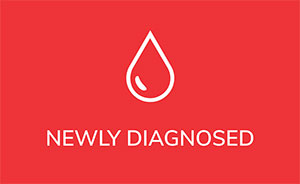The European Research Initiative on CLL (ERIC) held their first international meeting, NEW FRONTIERS IN CLL RESEARCH, in Barcelona, Spain Oct. 25-27, 2018.
ERIC is a smaller meeting attended mostly by researchers who are primarily focused on CLL. Every session is on CLL, so unlike ASH, there is no downtime away from the lecture hall. It is also directed toward researchers, so while the talks tend to be academic and less accessible for most patients, there is a treasure trove of valuable information being shared.
The CLL Society had the chance to interview CLL expert, Dr. Jennifer Brown, from the Dana Farber Cancer Institute (DFCI) in Boston on what should, at first glance, not appear to be a major issue, the correct diagnosis of chronic lymphocytic leukemia.
It turns out that the diagnosis is not always a slam dunk.
Take-Aways:
- The first goal for any patient is to ensure that we have the correct diagnosis.
- Uncertainty over the correct diagnosis of CLL is not an unusual occurrence in the consulting room of a tertiary CLL expert, but arriving at an incorrect diagnosis is a relatively rare issue overall.
- Flow cytometry, a standard hematology test that can be done from a regular blood draw, or if need be from a bone marrow biopsy or lymph node biopsy, looks at the immunophenotypes, or fingerprints of the cells, to accurately diagnose chronic lymphocytic leukemia or any blood cancer.
- The classic pattern needed to diagnose CLL is a population of > 5,000 identical (monoclonal) B cells per microliter of blood that express the following markers:
- The CD5+ marker is unusual as it is typically found only on T, not B, cells.
- Without careful review of the flow cytometry, CLL can sometimes be mistaken for splenic marginal zone lymphoma (SMZL) or mantle cell lymphoma (MCL).
- These related B cell lymphomas (remember that CLL is both a lymphoma and leukemia) may behave differently or require different therapies.
- Some cases don’t clearly fit any classic pattern and remain unspecified.
- The good news is that in most circumstances there is a period of watch and wait (active observation) and by the time treatment is indicated, retesting can usually establish the correct diagnosis and treatment.
For more step-by-step basic information explaining the diagnosis of CLL, see my article: The Diagnosis of Chronic Lymphocytic Leukemia.
Here is my interview with Dr. Jennifer Brown from Harvard.
Stay strong.
We are all in this together.
Brian Koffman
Chief Medical Officer and Executive VP, CLL Society

















